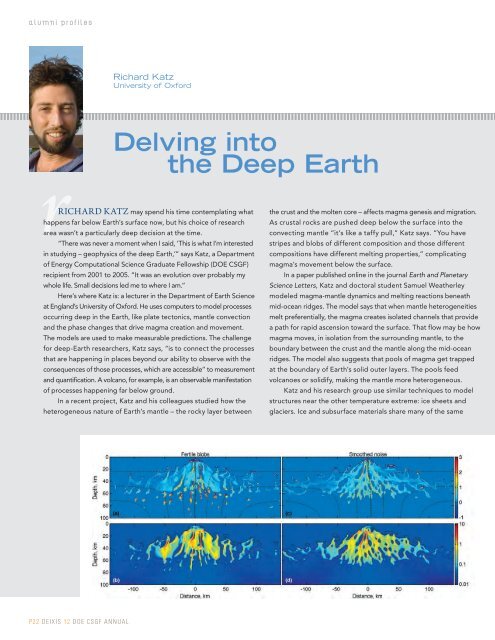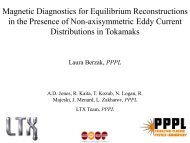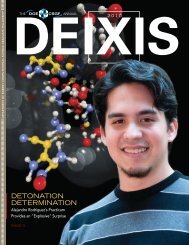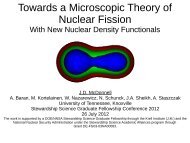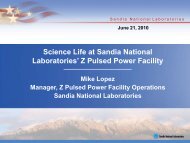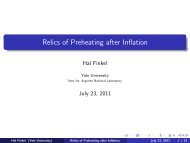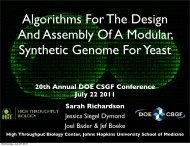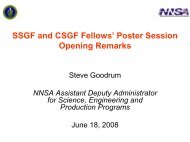2012 - Krell Institute
2012 - Krell Institute
2012 - Krell Institute
Create successful ePaper yourself
Turn your PDF publications into a flip-book with our unique Google optimized e-Paper software.
alumni profiles<br />
Richard Katz<br />
University of Oxford<br />
Delving into<br />
the Deep Earth<br />
rarea wasn’t a particularly deep decision at the time.<br />
RICHARD KATZ may spend his time contemplating what<br />
happens far below Earth’s surface now, but his choice of research<br />
“There was never a moment when I said, ‘This is what I’m interested<br />
in studying – geophysics of the deep Earth,’” says Katz, a Department<br />
of Energy Computational Science Graduate Fellowship (DOE CSGF)<br />
recipient from 2001 to 2005. “It was an evolution over probably my<br />
whole life. Small decisions led me to where I am.”<br />
Here’s where Katz is: a lecturer in the Department of Earth Science<br />
at England’s University of Oxford. He uses computers to model processes<br />
occurring deep in the Earth, like plate tectonics, mantle convection<br />
and the phase changes that drive magma creation and movement.<br />
The models are used to make measurable predictions. The challenge<br />
for deep-Earth researchers, Katz says, “is to connect the processes<br />
that are happening in places beyond our ability to observe with the<br />
consequences of those processes, which are accessible” to measurement<br />
and quantification. A volcano, for example, is an observable manifestation<br />
of processes happening far below ground.<br />
In a recent project, Katz and his colleagues studied how the<br />
heterogeneous nature of Earth’s mantle – the rocky layer between<br />
the crust and the molten core – affects magma genesis and migration.<br />
As crustal rocks are pushed deep below the surface into the<br />
convecting mantle “it’s like a taffy pull,” Katz says. “You have<br />
stripes and blobs of different composition and those different<br />
compositions have different melting properties,” complicating<br />
magma’s movement below the surface.<br />
In a paper published online in the journal Earth and Planetary<br />
Science Letters, Katz and doctoral student Samuel Weatherley<br />
modeled magma-mantle dynamics and melting reactions beneath<br />
mid-ocean ridges. The model says that when mantle heterogeneities<br />
melt preferentially, the magma creates isolated channels that provide<br />
a path for rapid ascension toward the surface. That flow may be how<br />
magma moves, in isolation from the surrounding mantle, to the<br />
boundary between the crust and the mantle along the mid-ocean<br />
ridges. The model also suggests that pools of magma get trapped<br />
at the boundary of Earth’s solid outer layers. The pools feed<br />
volcanoes or solidify, making the mantle more heterogeneous.<br />
Katz and his research group use similar techniques to model<br />
structures near the other temperature extreme: ice sheets and<br />
glaciers. Ice and subsurface materials share many of the same<br />
P22 DEIXIS 12 DOE CSGF ANNUAL


